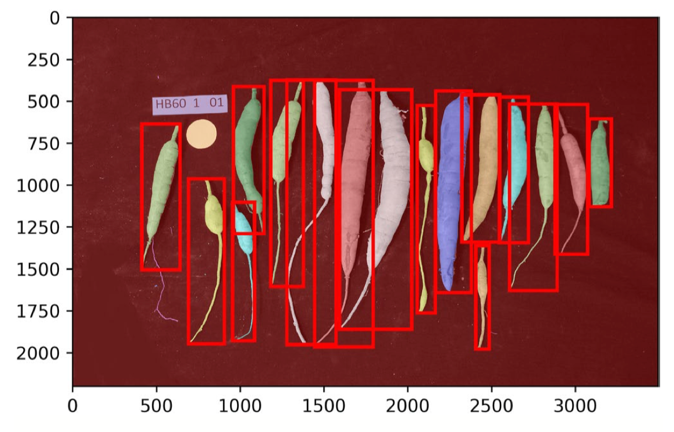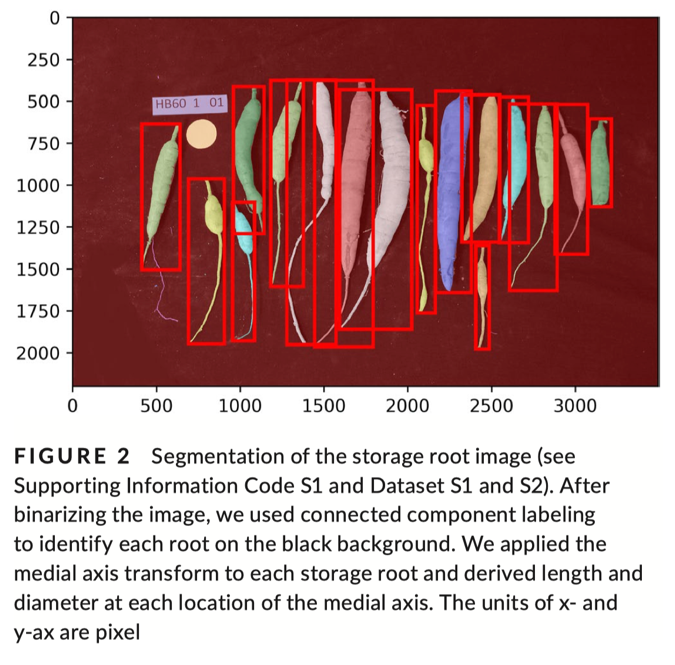Highlight Activities 2020: Image‐based root phenotyping links root architecture to micronutrient concentration in cassava
Micronutrient deficiency or “hidden hunger” is estimated to affect two billion people worldwide and increasing the micronutrient concentration of food could play an important role in tackling this global challenge. Using a combination of imaging techniques and atomic absorption spectroscopy, we describe a link between root phenotype and micronutrient concentration in cassava, which could enable new phenotypic selection strategies for breeding. This approach could be used with existing breeding infrastructure to enhance the micronutrient concentration of cassava and hence, benefit the health of people, particularly in low-income countries where cassava is consumed as a staple crop.
Summary
- Cassava storage roots are a staple food in low-income countries of South-East Asia and sub-Saharan Africa, where growth stunting is prevalent as a consequence of micronutrient deficiencies. We aim to link phenotypes of field-grown cassava
roots to micronutrient concentration in the edible storage roots as a simple way to improve phenotypic selection for nutritional value in cassava.
- We used existing and newly developed imaging techniques to quantify root phenotypes of the cassava root architecture over time and used flame atomic absorption spectroscopy to measure micronutrient concentration in storage roots. Both
together allow the association of root phenotypes with micronutrient concentration in mature cassava roots.
- We show that early and late bulking genotypes in cassava exhibit distinct foraging behaviors that are associated with micronutrient concentration in the edible storage root. Our observations suggest that late bulking cassava is a key to provide
sufficient micronutrients in the edible storage root.
- The association between root phenotype and micronutrient concentration with imaging techniques allows phenotypic selection for enhanced micronutrient concentration. Therefore, implementing image-based phenotyping into cassava breeding programs in sub-Saharan Africa and South-East Asia could be an essential element to resolve micronutrient deficiencies that puts individuals at a higher risk of growth stunting.
Busener N, Kengkanna J, Saengwilai PJ, Bucksch A. 2020. Image‐based root phenotyping links root architecture to micronutrient concentration in cassava. Plants, People, Planet 2: 678–687.


